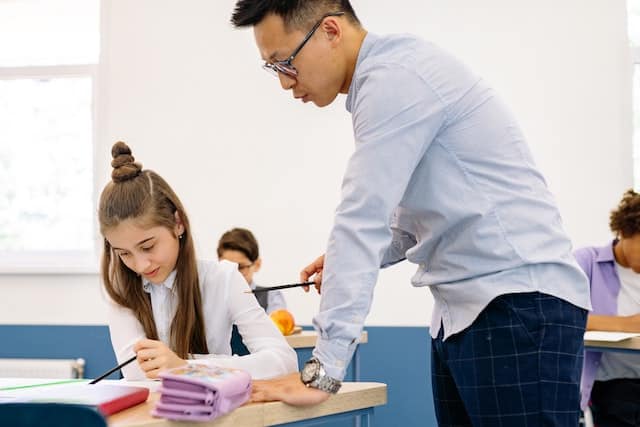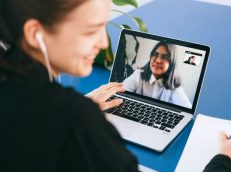Every teacher wants to ensure their students are having the best learning activities possible and are able to learn and apply the lessons taught. To ensure this, it is important to have solid teaching strategies in place.
One-on-one teaching strategies offer the unique opportunity to provide individualized instruction to individual students.
It also allows teachers to assess each student's needs, focusing on their strengths and weaknesses, and provide comprehensive learning activities to achieve their learning goals.
In this article, we will discuss some of the one-on-one teaching strategies and how you can use them to effectively create engaging lessons for students.
Through these instructional strategies, teachers can help foster a dynamic learning environment for their students.
We will also discuss the importance of leveraging technology as part of one-on-one teaching strategies, as well as the importance of ongoing assessment and feedback for students to further enhance the learning experience.

What are Some Effective One-on-One Teaching Strategies to Deliver Better Learning Outcomes?
Teaching one-on-one can be a highly effective way to ensure students get the personalized attention they need to succeed.
Whether you're a private tutor or a classroom teacher, incorporating one-on-one teaching strategies into your lessons is a valuable tool to help your students achieve their goals.
So, here are some effective one-on-one teaching strategies:
1. Establishing a Comfortable Learning Environment
Establishing a comfortable learning environment is key to effective one-on-one teaching sessions.
The physical space should be inviting and free of distractions, allowing the student to focus their attention on the lesson.
The instructor should also set the tone of the session by being open and approachable, as well as providing positive feedback and encouragement throughout the lesson.
Creating a positive atmosphere is one way to build good relationships with students and allows them to feel more comfortable and relaxed, making it easier for them to learn and retain the material.
2. Assessing Each Student’s Individual Needs
One of the most important components of effective one-on-one teaching is assessing each student’s individual needs.
It is essential to understand their academic level, skill level, and learning preferences in order to deliver personalized lessons that are both challenging and engaging.
This can be accomplished through informal conversations, observing students during class, and giving pre- and post-assessments.
By understanding each student’s unique needs, teachers can tailor their lessons to ensure that all students are getting the most out of the lesson and having a successful learning process.
3. Develop an Individualized Lesson Plan
One of the most important strategies for one-on-one teaching is developing an individualized lesson plan.
An individualized lesson plan is tailored to the student's specific needs and learning style and should take into account the student's interests, abilities, and prior knowledge.
A well-crafted lesson plan should also incorporate scaffolding techniques, such as providing the student with a clear set of objectives and expectations and breaking down the lesson into manageable tasks.
Moreover, it should provide ample practice opportunities and include methods of assessment that clearly measure the student’s progress.
By following these steps, teachers can ensure that their one-on-one lessons are engaging and effective.
4. Encouraging Active Participation
Active participation of students is a cornerstone of effective one-on-one teaching strategies.
Teachers can encourage active participation by setting up classroom activities and tasks that involve collaboration and problem-solving.
This helps to foster an atmosphere of collaboration and mutual support, and also allows students to gain firsthand experience of the topics being covered in the lesson.
For example, activities like “think-pair-share” can be used to get students to discuss and share their thoughts on the topics in an engaging way.
Additionally, teachers should ensure that the questions they pose to students are open-ended, which encourages the students to think critically and come up with their own solutions.
5. Use Technology
Technology can be a powerful tool for one-on-one teaching.
Consider using online resources, interactive apps, or educational software to enhance your teaching style, your lessons and engage your student.
6. Utilizing Feedback to Assess the Effectiveness of the Lesson
Lastly, it is important to utilize student feedback to assess the effectiveness of the lesson.
You can do this by interacting with the student during the lesson and getting their opinion on how they are grasping the material as well as their opinion on the structure and content of the lesson.
It is also beneficial to have the student create a brief feedback survey after the lesson or a set of questions they can answer in order to assess their understanding.
This feedback should be used to make adjustments or modifications to future lessons and to evaluate if the desired learning objectives have been met.

Final Thoughts
In conclusion, one-on-one teaching strategies are an effective way to provide individualized instruction and support to students to achieve their academic goals.
These strategies can also help students become more engaged in their learning, increase motivation, and improve overall performance.
By taking the time to plan and implement these effective teaching strategies, teachers can create an environment where all students can thrive.
Cudy helps connect tutors, students, and parents to conduct and schedule online lessons anytime and anywhere. Join Cudy and subscribe to our blog for many study tips and more!
FAQs
What are the most effective teaching strategies?
There are many effective teaching strategies, such as using technology to your advantage, providing specific, actionable feedback, or encouraging visualization and inquiry-based learning.
What is the advantage of one-on-one classes for teachers?
One-on-one classes benefit teachers because they can get to know their students fully and keep track of their progress.
Why is one-on-one instruction beneficial for students?
One-on-one instruction is beneficial for students because it allows them to interact openly and honestly with the teacher and also has a customized lesson.
What strategies will you use to build relationships with students?
Some of the strategies that teachers can use to build relationships with students include providing feedback, engaging in discussions, and being responsive to their needs.
How do you motivate students?
To motivate students, you can Get creative with teaching methods, promote a growth mindset, or develop meaningful and respectful relationships with your students.






